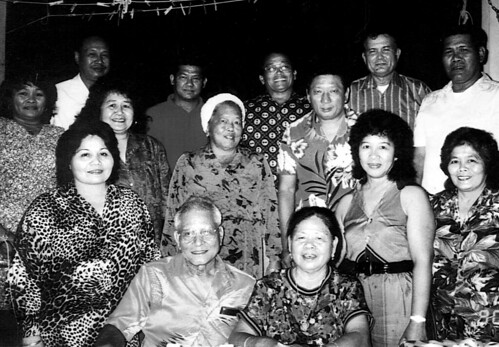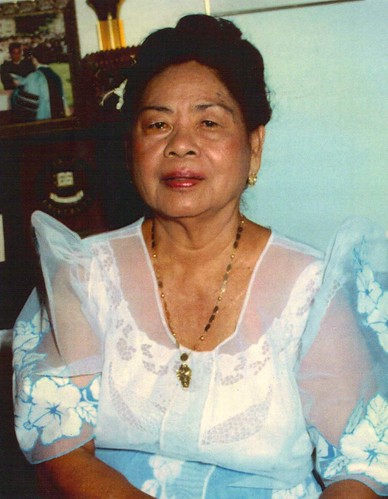Educator and politician
Rosa Aguigui Reyes (1915 – 2007) is distinguished as being the first woman elected to the Guam Congress, in 1946. She was a pioneer in politics and in education. Reyes was born 7 February 1915 to Bienvenida Mata Tyquiengco and Ignacio Babauta Aguigui. She graduated from Agana High School before World War II.
In 1946 Rosa Aguigui married Ignacio Mendiola Reyes (who later became a commissioner of the village of Merizo/Malesso’). That same year, Rosa Reyes was elected to the Guam Congress. The Guam Congress largely was a formal advisory body which did not have any specific powers under the island’s military government administered by the United States Navy. Until Reyes’ election, though, all the members of the Guam Congress were men. Her election made her a pioneer in Guam’s political scene and opened the door for other women to become engaged in positions of political leadership.
After serving one term she became one of the first students at the newly opened College of Guam. In 1954 she received an Associate’s degree in education at the College of Guam, being part of the first graduating class. She attended the University of Hawai’i as a grant recipient and received an award of distinction for her work.
Her career as an educator lasted 42 years beginning as a classroom teacher at Merizo Martyrs Elementary School in Malesso’, a position she held for 31 years. She was also a principal at FQ Sanchez School in Humåtak for 11 years.
In recognition of her pioneering achievements and accomplishments, the University of Guam conferred upon Reyes an Honorary Doctorate of Humane Letters. She was also inducted into the Educator’s Hall of Fame in 1983.
As a distinctive educational leader on Guam, Reyes is a role model for young teachers today. The Malesso Library was renamed the “Rosa Aguigui Reyes Memorial Library” in her honor. She was a proud resident of Malesso and was active in the upkeep and beautification of San Dimas Catholic Parish and participated in the preparation of the village fiestas for visitors who came to celebrated the village patron saint’s day.
Reyes was also a research assistant for American anthropologist, Laura Thompson, who produced significant works on Guam history and the Chamorro people. Thompson conducted much of her field research in Malesso’ where she and Reyes became good friends as well.
Reyes died in 2007. Throughout her years, she considered the people in her daily life as her family. Those who were younger than she, she considered her children; those of her age, her brothers and sisters. She was respected as a person who continually shared her knowledge and wisdom of the Chamorro language, culture and traditions about the people of Guam. Even more importantly, she helped instill in those who knew her a deep sense of honor and respect for one another.
For further reading
I Manfåyi: Who’s Who in Chamorro History. Vol. 1. The Hale’-ta Series. Hagåtña: Political Status Education and Coordinating Commission, 1995.
Sanchez, Pedro C. Guahan Guam: The History of Our Island. Hagåtña: Sanchez Publishing House, 1987.



